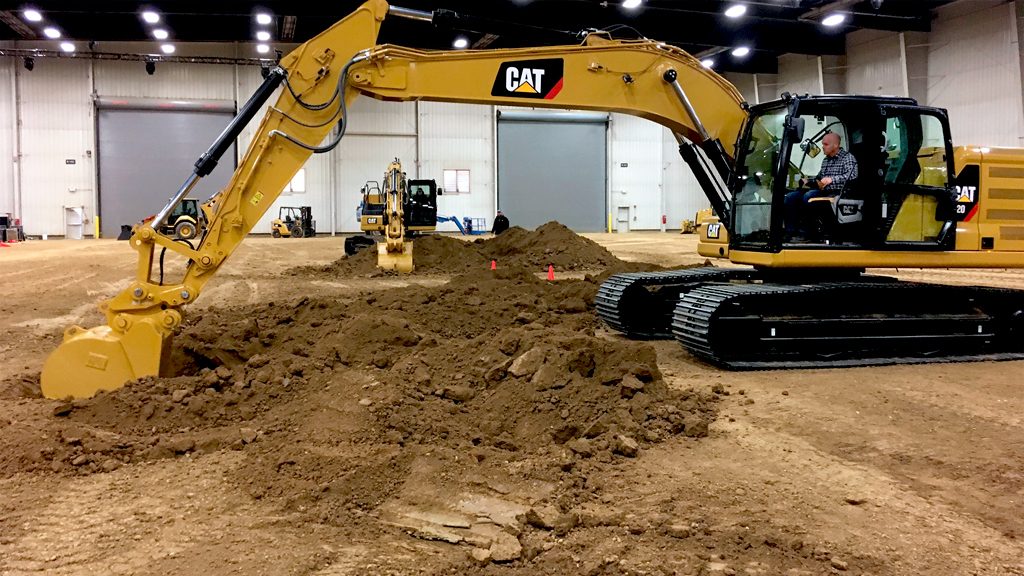In February, Caterpillar reported strong results for the fourth quarter of 2023 and for the year overall. The company’s profit exceeded analysts’ expectations largely due to increased sales in the energy and transportation segment. Caterpillar is the largest manufacturer of heavy machinery in the world.
Caterpillar’s outlook for 2024 indicates sales will be similar to record levels seen in 2023, driven by continuing demand for heavy machinery across most of its markets.
The company has revised its 2024 financial targets upwards, increasing the range of its future Machinery, Energy and Transportation (ME&T) free cash flow from $4 billion to $8 billion to $5 billion to $10 billion. In 2023, the company’s ME&T free cash flow reached a record $10 billion.
As quoted by Bloomberg, Caterpillar’s Chief Executive Officer Jim Umpleby said: “Overall demand remains healthy across most of our end markets for our products and services…This reflects continuing healthy customer demand as well as our strong operating performance.”
Caterpillar’s 2024 strategy is based on a cautious yet optimistic outlook. The company predicts relatively stable inventory levels of machinery at dealerships. According to a recent presentation, the firm is planning to increase prices for its machinery in response to rising raw material costs.
Komatsu, another major player in global heavy machinery manufacturing, also achieved strong results for 2023. Komatsu’s expectations for 2024 are similar to Caterpillar’s. According to the latest reported quarterly results (for Q3 2023; Komatsu’s fiscal year ends in Q1), from April to December 2023, the company achieved +10.1 per cent year-on-year sales growth and an increase in operating income of +30.8 per cent, one of the highest gains for the company on record.
Despite the regional sales growth in North America and Latin America, Komatsu faced a demand slowdown in Asia and Europe in 2023. For the future, Komatsu forecasts a varied regional performance. The weakest demand is expected to occur in China, where a continuing slowdown in construction activity is anticipated.
Both Komatsu and Caterpillar experienced strong growth in North America in 2023, mostly in businesses related to the construction of manufacturing facilities. Manufacturing construction is likely to continue to grow in 2024 due to significant government investments in various high-tech, clean energy and infrastructure development programs. At the same time, the residential segment remains dependent on overall economic conditions and interest rates.
According to a report from Deloitte, “Manufacturing construction is likely to grow further in 2024, buoyed by funding of more than US$52 billion from the CHIPS Act and close to US$152 billion from the IRA and IIJA…Going into 2024, there could be a more prominent impact of IIJA funding, with around US$58.8 million earmarked for transportation, broadband, climate, and energy construction projects. Substantial infrastructure investments from state and local governments are also likely to drive growth.”
Even though Asia Pacific (excluding China) is likely to see softening economic conditions, the construction outlook for countries in that region remains positive. According to a report from Oxford Economics, the annual increases in construction activity in India, Japan and the rest of Asia are projected at +1.3 per cent, +5.2 per cent, and +3.8 per cent, respectively.
In 2023, China’s construction industry was negatively impacted by the slowdown in residential real estate. As provided by the National Bureau of Statistics (NBS), “investment in real estate development fell by -9.6 per cent in 2023, with the floor space of projects under construction falling by -7.2 per cent, and the floor area of new project starts declining by -20.4 per cent.”
Going forward, infrastructure development is also likely to decrease due to a lack of investment. A large part of infrastructure funding from local government is tied to the sale of land, which has recently declined significantly. In its 2024 outlook, Oxford Economics is expecting Chinese construction to decrease by -5.6 per cent.
In EMEA (Europe, Middle East and Africa), according to Fitch Ratings, 2024 construction trends will be based on increased investment in infrastructure projects, such as power generation, water, roads, bridges, airports, railways etc.
Residential, commercial and industrial construction will be less pronounced due to a limited availability of funding. This year, Fitch foresees strong activity in the sector. According to Oxford Economics, Saudi Arabia and South Africa will play a leading role in the region, with the European outlook staying relatively weak.
Recently, investments in infrastructure projects in Latin America have been limited. However, 2024 is likely to be a year of meaningful construction activity.
According to Economist Intelligence, “A number of large infrastructure investment opportunities will emerge in Latin America in 2024, but growth will be below potential, reflecting concerns about regulation, profitability and corruption.”
There is a massive pipeline of infrastructure projects that is likely to attract both government and private funding. One of the major initiatives in Latin America for 2024 is the construction of the US$890 million third reservoir for the Panama Canal.
Caterpillar and Komatsu have cautiously optimistic views for 2024 despite uneven regional prospects. Both major manufacturers of heavy construction machinery have reported outstanding 2023 performances and indicated they are looking for strong results in the current year.
This promising outlook is based on continuing government investment in infrastructure projects in North America and economic expansion in Japan, the Middle East and Africa. At the same time, headwinds to global construction in 2024 are coming from China, due to its weak real estate sector and from varying outlooks for European countries.
Dmytro Konovalov has over 10 years of experience in equity research and analysis for global markets at leading international financial institutions.





Recent Comments